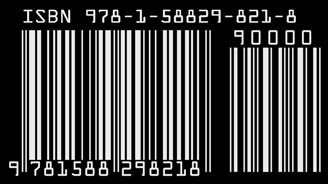Criminal Poisoning: Investigational Guide for Law Enforcement, Toxicologists, Forensic Scientists, and Attorneys (34 page)
Authors: John H. Trestrail

States, 89-90
description,
trial outcome, 59
color, 121
Stepmother’s poison, 6
form, 120
Stockyard’s Bluebeard, 11
how it kills, 121
Stomach cramps, 66
lethal dose, 121
Strychnine, 10, 122-124
odor, 121
description,
poison notes, 121
color, 122
solubility, 121
form, 122
source, 121
how it kills, 123
taste, 121
lethal dose, 123
detection,
odor, 122
method, 122
poison notes, 123
specimens, 122
solubility, 122
toxic levels, 122
source, 123
selected cases, 122
taste, 122
victim,
detection, 124
administered, 122
homicidal cases, 10
disease confusion, 122
minimum lethal dose, 123
symptom onset,
selected cases, 124
acute, 122
victim,
chronic, 122
administered, 123
victim notes, 122
disease confusion, 123
Somerset, Countess of, 8
symptom onset
Son, 3
acute, 123
Spanish Fly, 17, 63
chronic, 123
Spara, Hieronyma, 7
victim notes, 124
Specimens for analysis, 76
Sudafed(r) capsules, 49
Squires, Edward, 8
Sugar of lead, 7
Statistical analysis, 56-61
Sulla, 6
background, 57
Sumerians, 2
gender, 57
Superfund amendments and
gender offender vs. number of
Reauthorization Act (SARA),
victims, 60
44
geographic location, 57
Suspicion, aroused, 78-79
number of victims, 57
Susruta Samhita, 3
180
Index
Suttee, 3
The Toxic Avenger, 109
Swango, Michael, 24, 55
Theriaca, 4
Symptoms, 67t
Thin-layer chromatography (TLC), 76
Symptoms, abrupt onset, 66
Thought processes, 52
Toffana, Madame Giulia, 7
T
Toxic Avenger,
Toxicological information.
Tamperer, 22, 24, 55
See Poison,
Tampering, 22, 55, 44, 55, 75
information sources
Tamper-resistant packaging, 22
Toxicology, 31
Tartar emetic, 7, 9
Toxicology, analytical, 75
Taylor, Alfred Swaine, 31
Toxicomaniac, 18, 54
Terrorist as poisoner, 56
Toxon, 4
Tetramethylenedisulfotetramine, 39
Trajan, Emperor, 5
Thallium, 19, 24, 124-126
Trepal, George, 23-24
description,
Trial of the poisoner, 91
color, 124
form, 124
Tylenol(r) tamperer, 21-22
how it kills, 124
Types of poisoners, 47
lethal dose, 124
Types of poisons, 29-45
odor, 124
poison notes, 124
U
solubility, 124
Ultraviolet spectroscopy (UV), 76
source, 124
Umbrella Assassination, 21
taste, 124
Underground catalogues, 40, 42
detection,
Undetectable, 50
analysis notes, 126
Uncle Fester, 40
method, 126
Unicorn’s horn, 7
specimens, 126
Unit 731 - 16
toxic levels, 126
United States,
homicidal cases, 18, 23
homicidal poisoning analyses,
minimum lethal dose, 124
89-90
selected cases, 126
victim,
V
administered, 125
disease confusion, 125
Vacor, 66
symptom onset,
Veda, 3
acute, 125
Venetian Council of Ten, 6
chronic, 125
Victimology, 69
victim notes, 125
Victims, 63-80
The Poisoner, 108
antifreeze, 112
Index
181
arsenic, 115
Von Hohenheim-Paracelsus, Philippus,
botulinus toxin, 117
30
classic symptoms of poisoning, 65
Von Munchausen, Baron, 64
cyanide, 120
investigative considerations, 65
W
poisoning indices, 65
Waite, Arthur Warren, 14
poisoning symptoms, 65-67
White arsenic, 6
random, 48
Wilson’s disease, 80
sodium monofluoroacetate, 122
Wolfsbane, 5
specific, 47
Word of mouth, 41
strychnine, 123
Workplace, 41
thallium, 125
World Wide Web, 41
who gets poisoned? 63
Victim’s death
Y
not homicidal, 93
not intended outcome, 93
Young, Graham Frederick, 18, 54
not poison, 93
Young Poisoner’s Handbook, movie, 54
Visual media, 41
Z
Volatile substance screens, 75
Volume of distribution (Vd), 85
Zimbabwe, 24
Vomiting, 66
Zopyrus, 3

CRIMINAL POISONING
INVESTIGATIONAL GUIDE FOR LAW ENFORCEMENT, TOXICOLOGISTS, FORENSIC SCIENTISTS, AND ATTORNEYS
Second Edition
By
JOHN HARRIS TRESTRAIL, III, RPH, FAACT, DABAT
Center for Regional Poison Center, Grand Rapids, MI
In this revised and expanded edition of his critically acclaimed
Criminal Poisoning: Investigational Guide for Law Enforcement, Toxicologists, Forensic Scientists, and Attorneys,
leading forensic scientist John Trestrail, III offers a pioneering survey of all that is known about the use of poison as a weapon in murder. Topics range from the use of poisons in history and literature to convicting the poisoner in court, and include a review of the different types of poisons, techniques for crime scene investigation, and the critical essentials of the forensic autopsy. The author updates what is currently known about poisoners in general (psychological profi le, types, and statistical analyses) and their victims (who gets poisoned, investigative considerations, and classic symptoms of poisoning). The Appendix has been updated to include the more commonly used poisons, as well as the use of antifreeze as a poison, to refl ect some cases that have recently come to light.
Comprehensive and fully updated,
Criminal Poisoning: Investigational Guide for Law Enforcement, Toxicologists, Forensic Scientists, and Attorneys, Second Edition,
offers forensic scientists, police and private investigators, forensic psychologists, and criminal lawyers a unique one-volume summary of the knowledge and techniques needed to solve the near-invisible crime of poisoning and convict the perpetrator.
FEATURES
Revised and expanded edition covering all aspects of
Essentials of the forensic autopsy process
murder by poisoning
Updated profi les of the poisoner and his victim
Time-tested guidelines for the crime scene investigation of
Numerous fi gures now used to summarize and illustrate murder by poisoning
important points
Commonly used poisons to refl ect cases that have
Exhaustive list of key references and suggested readings recently come to light
for deeper understanding
Key courtroom strategies for successfully convicting the
Illuminating survey of the homicidal use of poisons in poisoner
history and literature
CONTENTS
Chapter 1
—Poisoners Throughout History
Appendix:
Some Common Homicidal Poisons.
Chapter 2
—Types of Poisons
Antifreeze (Methanol, or Ethylene glycol). Arsenic.
Chapter 3
—Poisoners
Botulinus Toxin. Cyanide. Sodium fluoroacetate.
Chapter 4
—Victims
Strychnine. Thallium.
Bibliographies on Homicidal
Chapter 5
—Crime Scene Investigation
Poisoning.
Poisoners Throughout History. Bibliography.
Chapter 6
—The Forensic Autopsy
Poisoning in Fiction Bibliography. Forensic Poisoning
Chapter 7
—Proving Poisoning
Bibliography. Analytical Toxicology. Bibliography.
Chapter 8
—Poisoners in Court
Index.
Chapter 9
—Poisoning in Fiction
Chapter 10
—Conclusion
Forensic Science and Medicine™
CRIMINAL POISONING:
Investigational Guide for Law Enforcement, Toxicologists,
Forensice Scientists, and Attorneys, Second Edition
ISBN: 1-58829-821-3
E-ISBN: 1-59745-256-4
ISBN 13: 978-1-58829-821-8 E-ISBN 13: 978-1-59745-256-4
humanapress.com
Trestrail_821-3_FSM6x9_HardCover.indd 2
Trestrail_821-3_FSM6x9_HardCover.indd 2
3/14/07 5:50:06 PM
3/14/07 5:50:06 PM
